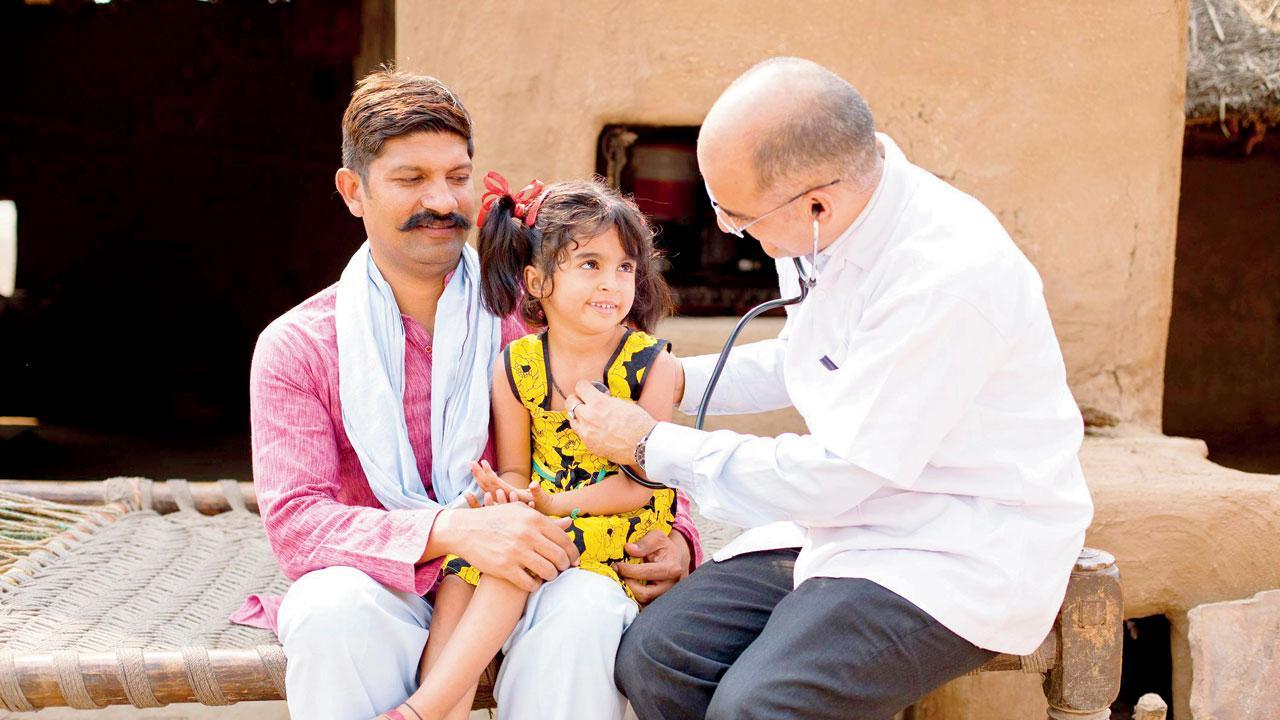State govt, doctors realise importance of GPs in dealing with the virus. They pledge to collaborate to stall the third wave

With the infection spread wide in the hinterland, the GPs, if trained properly, can save us unfortunate deaths. Representation pic
Family doctors, essentially private practitioners, who may be trained in different streams but understand the human body the same way, would be useful in treating the novel coronavirus infections at primary level, especially in the third wave. The disease is new and medical science is making breakthroughs every day in managing it.
ADVERTISEMENT
The challenge is to make a treatment protocol that can effectively fight the changing patterns of Covid-19 and its other clinical fallouts. Maharashtra government’s Covid task force has realised the need of roping in the age-old concept of family doctors, which has shown decline over the past few decades, to take the state’s fight forward. Supportive of the initiative, CM Uddhav Thackeray proactively interacted with the state’s doctors, including the state-appointed ones who manage primary healthcare in the rural areas and their urban counterparts, and independent practitioners from across Maharashtra. On Sunday, the Covid Task Force members guided doctors in diagnosis, line of treatment, judicious use of medicine, new complications like mucormycosis, and more importantly, they gave important tips about managing patients in home isolation, because it is increasingly noticed that the patients who are brought to hospitals in critical stages, hardly survive. What was understood from the interaction was that the doctors from all disciplines (Allopathy and Ayush) treating patients in home isolation must know when to shift the patient to the hospital, and for that they must be updated regularly in diagnosis and primary treatment.
It seems the family doctors are more than happy to help in this endeavour. Mumbai’s well-known general practitioner and president-elect of Maharashtra chapter of Indian Medical Association (IMA) Dr Suhas Pingle, finds good purpose in seeking family doctors’ assistance. He said that in the first wave, the family doctors could not participate because of their age (seniors aged above 55 years were advised to stay home then). “We lost many colleagues then. But now doctors (age no bar) are going all out in the second wave, mainly because most of them are vaccinated and the situation is more serious than ever. In the first wave, we were asked to refer Covid patients only to the government facilities. Political parties and their leaders threatened us then,” he said, adding that since the PM’s scientific advisor has predicted the third wave, we must plan for it.
Dr Pingle recalled the Health Survey and Development Committee that charted a course for public health investments and infrastructure in India. Headed by then British civil servant Sir Joseph William Bhore, the committee had recommended in 1946 that the preventive and curative services be integrated at all administrative levels and primary health centres be developed in two stages – short term and long term measures. “Sir William’s recommendations are still relevant and practical. The second and third wave can be dealt with using then. 80-85 per cent patients are asymptomatic or show mild symptoms. Family doctors can diagnose and treat them using a six-metre-walk test and video calls. They can give much-needed moral support to the patients and their families. Thus, we can deal with unavailability of beds, shortage of oxygen and medicines, and also reduce death rate.”
Dr Pingle says the IMA’s 45,000 members in Maharashtra are always ready to collaborate with the state. He says they are trained time-to-time in Covid protocol and expect the state task force to help it further. In addition to the main task force, the government has formed a paediatrics task force for taking care of children who are most likely to get affected in the coming days. IMA has 220 branches which can be encouraged to work full-force with the government, assures Dr Pingle. “The government will need some time to build enhanced healthcare at primary level. Our members in the small towns, villages and cities can help plug the gap of expertise needed in treating lifestyle diseases like diabetes and blood pressure during the third wave and even after it. We can strengthen the state’s infrastructure. The government should be positive and collaborate with doctors instead of intimidating them,” he said, in reference to the spats the IMA had with the government over the past one year.
How can family doctors help? Dr Pingle says the tradition has been diminishing because of economic, social and other reasons, and it isn’t good for India. He tells us how England runs its National Health Scheme, primarily with the help of family doctors. Every citizen gets a doctor who alone recommends special treatment. “These doctors act like gatekeepers. They help the government save money for healthcare services. We must revive the institution called family doctor who could behave like a family and treat patients physically as well as mentally. Medical service is a continuous process. Follow-up matters most. Patients need post-Covid treatment for lungs and other ailments. Family doctors can certainly help in such situations,” he adds.
Readers may have come across cases that deteriorated in home isolation because of various reasons, mainly due to the unpredictable nature of the disease. This columnist knows several, of which some couldn’t survive the onslaught; most recovered, but not without going through the scramble for bed and medicine. With the infection spread widely in the hinterland where healthcare is limited, the GPs, if trained properly, can save us unfortunate deaths.
Dharmendra Jore is political editor, mid-day. He tweets @dharmendrajore
Send your feedback to mailbag@mid-day.com
 Subscribe today by clicking the link and stay updated with the latest news!" Click here!
Subscribe today by clicking the link and stay updated with the latest news!" Click here!






